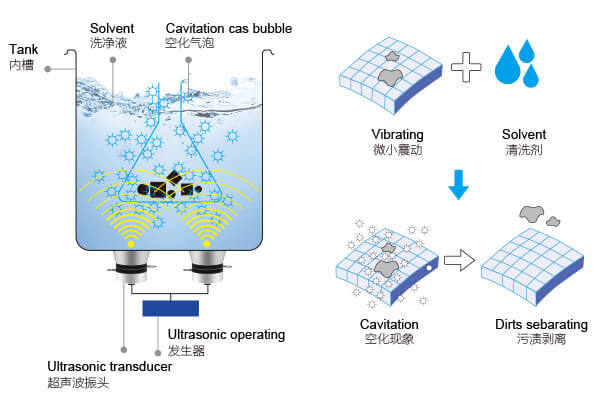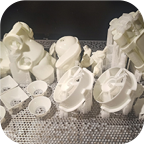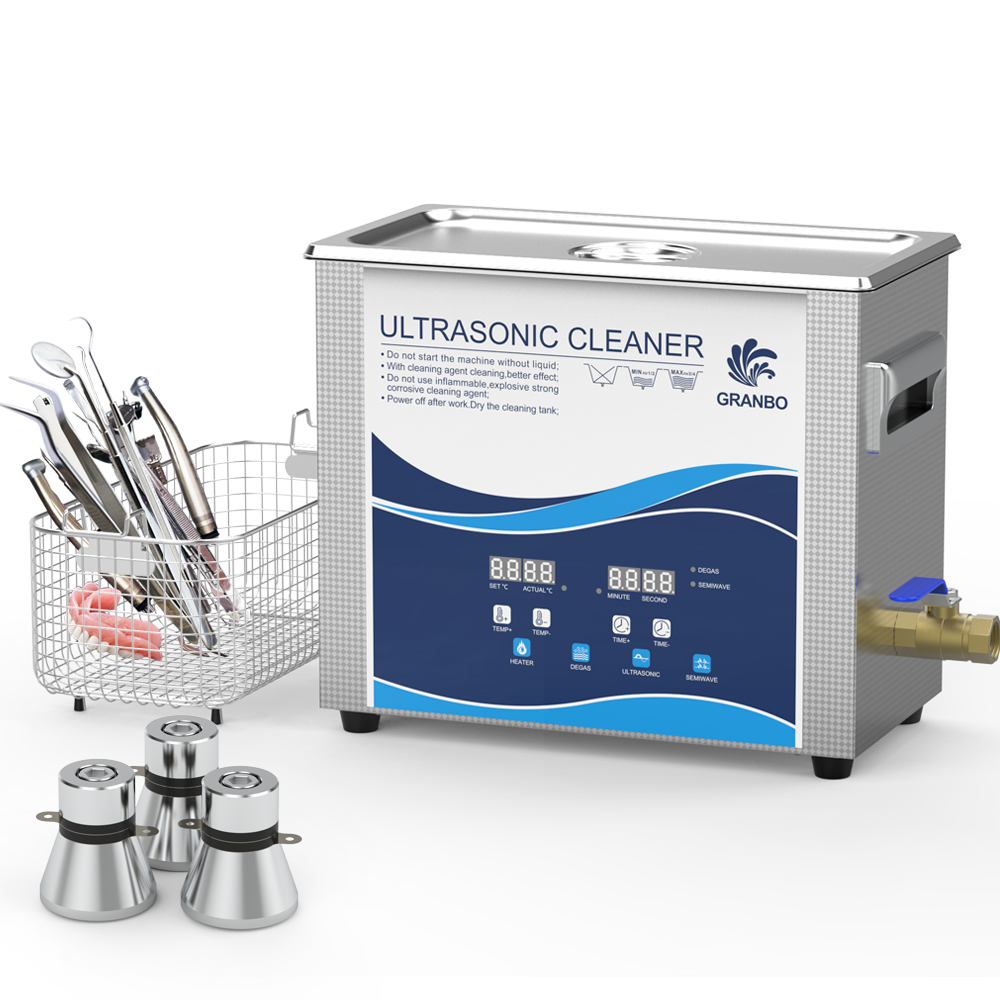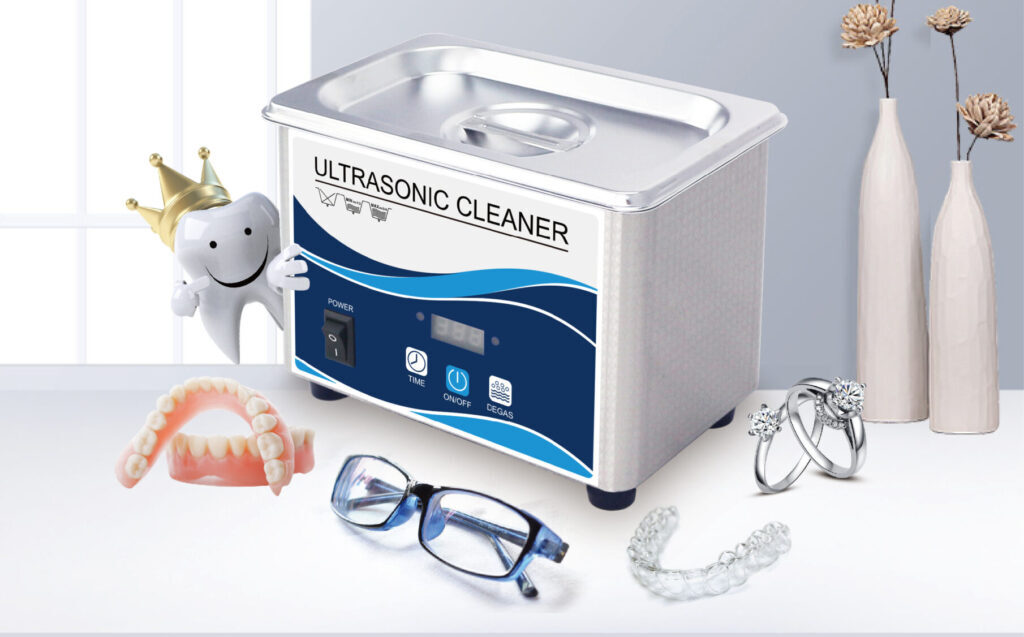Do Ultrasonic Cleaners Really Work?
Browse Volume:14 Classify:Support
Over the past decade, ultrasonic cleaners have quietly moved from the shelves of professional workshops and hospitals into homes, labs, and even beauty salons. You’ll now find them in dentist offices, jewelry stores, and increasingly in households where eyeglasses, watches, and small mechanical tools need attention.
What’s behind this rise in popularity? Part of the answer lies in convenience. Cleaning tiny or intricate objects by hand is not only time-consuming, it’s often ineffective. Brushes can’t reach narrow gaps, cloths miss crevices, and harsh chemicals can damage delicate surfaces. That’s where ultrasonic cleaners come in. They promise to deliver a deep, even clean—without friction, abrasion, or complicated manual effort.
The appeal isn’t limited to professionals. Consumers want tools that work well and save time, and the idea of pressing a button and getting lab-level cleaning results has turned heads. As the price of compact models has dropped, even small-scale users now see ultrasonic cleaning as a practical solution.
But how does this technology really work? Can something that just “buzzes” in a bath of water really outperform traditional scrubbing? That’s where the science comes in.
What Happens Inside an Ultrasonic Cleaner
Despite their minimalistic appearance, ultrasonic cleaners operate on a fascinating physical principle called cavitation. It begins when high-frequency sound waves—typically ranging from twenty to eighty thousand cycles per second—are introduced into a liquid bath. These waves are generated by transducers mounted on the bottom or sides of the tank.
As these sound waves move through the fluid, they cause rapid pressure changes. During the low-pressure phase, millions of tiny bubbles form. These aren’t ordinary air bubbles—they are vacuum cavities created by sound energy pulling molecules apart. When the pressure rapidly shifts back, the bubbles collapse violently in a process known as implosion.

The Principle Behind Ultrasonic Cleaning
It’s this collapse that does the work. Each bubble releases a tiny but powerful shockwave. While individually small, these micro-implosions happen thousands of times per second and across every surface submerged in the bath. The result is a scrubbing effect at a microscopic level. Dirt, oils, metal shavings, polishing compounds, and biofilms are dislodged—even from the tiniest corners or internal threads of the object.
The beauty of cavitation is that it reaches where brushes can’t and does so without abrasion. This makes ultrasonic cleaning ideal for items with delicate surfaces, complex geometry, or hard-to-reach interiors.
Frequency plays a role too. Lower frequencies like 25 kilohertz produce larger bubbles with stronger impacts, suitable for heavy-duty cleaning. Higher frequencies, such as 80 or 120 kilohertz, generate smaller, gentler bubbles—perfect for items like microchips or gemstones.

Eyeglasses cleaning
In short, ultrasonic cleaning isn’t about shaking items clean. It’s about harnessing sound energy to clean at the molecular level, with astonishing thoroughness.
Where Ultrasonic Cleaners Shine
To understand whether ultrasonic cleaners are “good,” it helps to look at the variety of tasks they handle with ease. One of the most well-known uses is jewelry cleaning. Rings, necklaces, and earrings—especially those with intricate filigree or gemstone settings—trap skin oil, lotion, and dust. After a few minutes in a warm ultrasonic bath, they emerge with a level of brightness that’s hard to achieve with a cloth or brush.
Eyeglasses and sunglasses are another common candidate. Frames collect sweat, grease, and makeup in the hinges and nose pads, places that are hard to reach without disassembly. Ultrasonic cleaners gently lift the grime away without scratching lens coatings or damaging alignment.
Dentists and hygienists rely on ultrasonic baths to pre-clean tools before sterilization. Scalers, picks, and dental mirrors get contaminated with biological material that is difficult and dangerous to scrub manually. In a clinical setting, an ultrasonic cleaner removes this debris efficiently and safely, reducing infection risks and minimizing tool wear.
Labs use ultrasonic tanks to clean glassware and scientific instruments. Even tiny residues left behind after washing can interfere with experiments or testing results. With ultrasonic cleaning, these traces are removed thoroughly, even from the narrow necks of flasks and beakers.
In electronics, ultrasonic cleaning is used to clean solder flux from circuit boards without damaging sensitive components. The ability to use deionized water and high-frequency cavitation makes it suitable for delicate applications.
Automotive technicians clean carburetors, fuel injectors, and even turbo parts with ultrasonic systems. The process strips away carbon buildup and oil deposits, restoring performance without the need for toxic solvents or labor-intensive dismantling.
Where ultrasonic cleaning truly shines is in precision. The technology doesn’t just make things look cleaner—it gets into the places that matter. It removes the invisible contaminants that interfere with function, aesthetics, or safety, whether it’s a surgical instrument or a precision gear assembly.
The Clear Benefits of Ultrasonic Cleaning
When people talk about ultrasonic cleaners being “good,” they’re often referring to convenience. But the real value goes much deeper. These devices offer a unique blend of speed, precision, and versatility that traditional cleaning methods simply can’t match.
One of the biggest advantages is the ability to clean intricate and inaccessible areas. Items with grooves, hollows, tight corners, or layered surfaces—like chain links, screw threads, or gear teeth—pose a challenge for cloths or brushes. But with ultrasonic cleaning, there’s no need to reach into every crevice. The bubbles do that job automatically, surrounding the entire object and delivering consistent cleaning across the surface.
Speed is another key benefit. Tasks that might take fifteen minutes or more using solvents and scrubbing can often be completed in five minutes or less with ultrasonic cleaning. In busy environments like dental offices or production lines, this time saving adds up fast.
Ultrasonic cleaning is also gentler than most assume. It removes dirt and grime without scratching or rubbing, making it perfect for delicate surfaces like gold, platinum, coated lenses, or surgical steel. Compared to abrasive pads or harsh chemicals, ultrasonic cleaning reduces the risk of accidental damage.
The process is also more consistent than manual cleaning. Human effort varies depending on pressure, fatigue, and technique. But a machine delivers the same energy every cycle, producing repeatable results that are essential in labs and manufacturing.
There’s an environmental benefit too. Many ultrasonic cleaners work well with mild detergents or biodegradable solutions, reducing the reliance on toxic solvents. Combined with their efficiency and lower waste output, ultrasonic systems are often part of greener, safer workplace protocols.

Ultrasonic cleaning agent
And finally, they’re less labor-intensive. Instead of standing over a sink, scrubbing with a brush or rinsing with harsh fluids, the user can place the item in the tank, press a button, and walk away while the machine does the work.
These advantages explain why ultrasonic cleaning has expanded far beyond its origins in electronics and jewelry. Today, it’s found in hospitals, research centers, and even homes—not just because it’s easy, but because it’s extremely effective at a microscopic level.
Realistic Limitations of Ultrasonic Cleaners
As powerful as ultrasonic cleaning is, it’s not a miracle cure for every cleaning challenge. In fact, many early adopters become frustrated when their expectations don’t match reality—not because the cleaner failed, but because it was used in the wrong way or on the wrong material.
One of the most important limitations is material compatibility. Some items simply don’t belong in an ultrasonic cleaner. For example, gemstones like opals, emeralds, or pearls can fracture or lose their luster due to internal weaknesses or porous structures. Antique jewelry held together with glue may fall apart under ultrasonic energy. Wooden handles, soft plastics, or items with hidden cavities that trap water may also suffer.

Granbo ultrasonic Jewelry Cleaning effect
Another common issue is using the wrong solution. While tap water can be used for some basic cleaning, results improve significantly with purpose-made ultrasonic detergents. Using thick liquids, oily substances, or corrosive chemicals can reduce cavitation efficiency or even damage the tank.
Misuse is another problem. Many people overload the tank, placing too many items in direct contact with each other or the bottom surface. This disrupts cavitation and can lead to uneven results or scratched parts. Items should be suspended in a basket or tray with adequate spacing to allow water flow around them.
There’s also the issue of noise and heat. Though not extreme, most ultrasonic cleaners generate a steady buzzing or humming sound that some users find unpleasant. The process also produces heat over time, especially in high-power units, which may not be ideal for temperature-sensitive components unless the machine has a cooling system or thermal cutoff.
Entry-level machines, especially consumer models, may lack the power or frequency range to clean more demanding items. They’re fine for light jobs like eyeglasses or rings, but not designed for industrial parts, fuel injectors, or medical tools.
Finally, cleaning time must be managed carefully. Running a machine too long can erode thin materials or cause delicate components to shift or loosen. More is not always better.
Understanding these limitations helps users get the best results. Used properly, ultrasonic cleaners deliver outstanding performance. Misused, even a high-end model can disappoint.
What Makes a Good Ultrasonic Cleaner
Choosing the right ultrasonic cleaner means knowing what matters most—not just in price or size, but in performance features that align with your actual needs.
Frequency is one of the first specs to look at. Lower frequencies like 25 or 28 kilohertz generate larger, more aggressive bubbles that are ideal for hard metals and heavy residues. Higher frequencies like 40, 68, or 80 kilohertz create smaller, gentler cavitation that’s better for delicate materials like electronics, glassware, or fine jewelry. Some high-end machines offer dual-frequency or switchable-frequency options, giving you flexibility for different tasks.
Power determines cleaning intensity. Too little power leads to weak cavitation, while too much can damage soft surfaces. A good machine balances power output with tank size—typically around 10 to 15 watts per liter. Adjustable power control is useful when you need to fine-tune the process for sensitive items.
Tank size must match your workload. A one-liter tank is enough for small jewelry or watch parts, but you’ll need 10 to 30 liters or more for auto components or lab glass. The tank should be deep enough to fully submerge items and wide enough to allow spacing between parts.
Material quality is important too. Look for stainless steel tanks, especially 304 or 316 grade, which resist corrosion and wear. Flimsy plastic or thin metal tanks won’t last and may degrade with time.
Helpful features include heaters for improved grease removal, degas mode to eliminate trapped air in fresh solutions, sweep mode to even out cavitation zones, and digital timers for precise cycle control. Some professional units also offer drain valves, touchscreen controls, and memory settings for repeat tasks.
Think about durability and repairability as well. A unit from a reputable manufacturer with service options and replaceable parts may cost more upfront, but it will save you trouble over time.
If you’re running a business or relying on precise cleanliness for research or client safety, it makes sense to invest in a well-built ultrasonic cleaner with the right configuration. For home use, a simpler model may be enough—but even then, quality still matters.
Do Household Ultrasonic Cleaners Work Well
Ultrasonic cleaners are no longer limited to medical labs or repair shops. A growing number of compact and affordable units are being sold for home use, often marketed for jewelry, glasses, or dental appliances. But how well do these machines actually work outside professional environments?
The short answer is, they work surprisingly well—within reason. Most consumer ultrasonic cleaners operate at a fixed frequency, usually around 40 kilohertz. This is a sweet spot for general-purpose cleaning because it produces bubbles small enough for gentle action, but powerful enough to remove light dirt and oils. For things like rings, eyeglasses, or retainers, this frequency gets the job done without risk to delicate finishes.
Household ultrasonic cleaners are ideal for cleaning simple items quickly. A pair of glasses with smudges near the hinges, a gold chain coated in lotion residue, or a razor clogged with shaving cream can all benefit from a short ultrasonic cycle. The convenience of placing an item in the tank, pressing a button, and walking away is part of the appeal. There’s no rubbing, no scrubbing, and no scratching.
However, there are limitations. Small home models often lack heating elements, which reduces cleaning efficiency for greasy or oily substances. They also tend to have smaller tanks, limiting what can fit. Trying to clean larger tools, kitchen utensils, or engine parts in a one-liter tank simply won’t work.
Some budget machines suffer from inconsistent build quality or weak transducers that wear out quickly. Users may also overestimate what these compact cleaners can do. If an object is covered in baked-on grime or embedded corrosion, ultrasonic energy alone might not be enough. Pre-soaking, brushing, or adding a compatible cleaning solution may be necessary for satisfactory results.
That said, for the right use cases, home ultrasonic cleaners offer excellent value. They simplify routine maintenance, extend the lifespan of personal items, and reduce the need for harsh chemicals or frequent replacements. When matched with the correct expectations, they prove to be one of the most useful small appliances in a modern household.
Misconceptions That Lead to Disappointment
Despite their effectiveness, ultrasonic cleaners are sometimes dismissed as ineffective. In many cases, that disappointment comes not from the machines themselves, but from misunderstandings about how they work.
One common misconception is that ultrasonic cleaners will remove anything instantly. While cavitation is powerful, it is not a substitute for proper setup. The right cleaning fluid, correct cycle time, and item spacing all play a role in performance. Dirty or reused solution, overloaded tanks, or incompatible materials will all compromise the outcome.
Another false belief is that the cleaning process is just vibration or shaking. In fact, ultrasonic cleaning is not mechanical movement—it is an acoustic process that generates microscopic implosions. If users expect to see objects shaking in the tank, they will be confused when they do not. Yet the cleaning still happens—quietly and invisibly—at a molecular level.
People also assume that longer cleaning times mean better results. In reality, too much time can lead to surface wear or diminished returns. Most items are fully cleaned within five to ten minutes. Longer cycles may be needed for stubborn residue, but continuous cleaning is rarely beneficial and may damage soft components.
The idea that any liquid can be used is another cause of poor outcomes. Tap water might be enough for light dirt, but certain contaminants require specific solutions. For example, oils need a degreasing agent, while flux residues require a fluid with a mild alkaline base. Using the wrong fluid can not only reduce cleaning efficiency—it may also damage the machine.
Finally, some users think that ultrasonic cleaners do not require maintenance. In fact, like any device, they need care. This includes changing the fluid regularly, wiping the tank clean, and ensuring the items placed inside are compatible with the equipment.
When ultrasonic cleaners are misunderstood or misused, it’s easy to blame the machine. But with a basic understanding of how cavitation works and how to support it with the right setup, most of these disappointments can be avoided entirely.
Practical Experiences Across Industries
Ultrasonic cleaning might sound like a high-tech solution, but in many industries, it has become a daily routine. These are not just theoretical benefits—they are tangible results experienced by professionals working under strict performance standards.
In dental clinics, ultrasonic cleaners are used every day to remove blood, plaque, and microscopic debris from tools before sterilization. Dental professionals value how efficiently these cleaners reach into grooved scalers and mirror heads. Without ultrasonic cleaning, more labor would be required, and results would be inconsistent.
In jewelry workshops, ultrasonic cleaners restore brilliance to items dulled by skin oil, dust, or polishing compounds. Gold chains with tiny links and settings full of gemstones can be restored in just minutes. Jewelers often say that ultrasonic cleaning is the only safe way to clean vintage pieces that cannot withstand brushing or solvent dipping.
Watchmakers and horologists rely on ultrasonic cleaners for cleaning gears, springs, and screws. These components are sensitive and often too small to clean manually. One watchmaker explained that a quality ultrasonic cleaner reduces reassembly errors by ensuring there is no leftover oil or grit that might cause mechanical failure.
Automotive technicians use ultrasonic tanks for cleaning fuel injectors and carburetors. These parts have internal passages that trap deposits invisible from the outside. When cleaned in an ultrasonic bath with the right solution, they are restored to full function without dismantling or replacing them.
In laboratories, ultrasonic cleaners handle everything from glassware to microfluidic chips. Scientists cannot afford contamination between experiments, and ultrasonic cleaning provides repeatable, high-precision results that manual washing cannot match.
Across all these fields, the pattern is the same. Ultrasonic cleaning delivers results that would be difficult, laborious, or impossible to achieve by hand. Professionals use it not because it is new or trendy, but because it works.
Are They Worth It for You
Whether ultrasonic cleaners are worth the investment depends on what you clean, how often you clean it, and what results you expect. But if your work or lifestyle involves small, delicate, or intricately shaped items—there’s a strong chance the answer is yes.
If you run a business that relies on precision, consistency, and hygiene, ultrasonic cleaning is more than a convenience. It becomes an operational advantage. Dental clinics, jewelry repair shops, research labs, and auto workshops all benefit from faster workflows, fewer cleaning errors, and longer equipment life. In these contexts, ultrasonic cleaners are not just good—they are essential.
For home users, the value lies in time saved and quality improved. Eyeglasses, electric shaver heads, earrings, makeup brushes, or retainer trays can be difficult to clean thoroughly by hand. An ultrasonic cleaner handles them with no mess and no damage. With regular use, the machine pays for itself by extending the life of your belongings and reducing reliance on professional cleaning services.
That said, ultrasonic cleaning is not for every job. Items that are porous, glued, or highly fragile may require alternate methods. Likewise, large parts or heavy-duty cleaning may need more powerful equipment than a household model can provide.
If your goal is quick, consistent, and contact-free cleaning of small to medium objects—and you are willing to match the machine to the material—ultrasonic cleaners offer a level of performance that few other tools can match.
They are not magic boxes. But they are smart tools. And in the right hands, they are very, very good.
 Granbo Sonic
Granbo Sonic


















